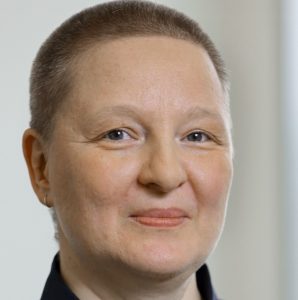
Andrea Schnepf is a W2 professor of soil-, root systems and their interactions at the Forschungszentrum Jülich, jointly appointed with the Faculty of Agriculture, University of Bonn. Her main research interest is the mathematical modelling of soil-plant interactions and rhizosphere processes. She is PI in several projects, including the priority program SPP 2089 “Rhizosphere Spatiotemporal Organisation – a Key to Rhizosphere Functions” or the BONARES projects “Soil³ – Sustainable Subsoil Management” , “Rhizo4Bio: RhizoWheat – Rhizosphere processes and yield decline in wheat crop rotations” and “Rhizo4Bio: CROP – Combining Root contrasted Phenotypes for more resilient agro-ecosystems”. Moreover, she is an Associate Member in the Cluster of Excellence EXC 2070 “Robotics and phenotyping for sustainable crop production”.
In this contribution, we elaborate on the mathematical representation of flow and transport processes in functional-structural plant models within the framework of graph theory. Experimental methods are now able to visualise the 3D plant architecture and its function at high spatial and temporal resolution. With mathematical modelling, we can understand the underlying processes and the interplay between structure and function.
Multiple biophysical processes are described by a system of partial differential equations with suitable initial and boundary conditions, and with source terms representing the reactions of multiple components. Spatial discretization leads to a system of ordinary equations. For plant systems, the spatially discretized domain can be viewed as a mathematical tree graph (i.e. a graph without loops) and the system of ode’s that described flow and transport processes on that domain can be expressed using the corresponding incidence matrix A and the discrete Laplace operator. We demonstrate how the incidence matrix and its transpose can be suitably used to express the fundamental Kirchhoff’s law for various different transport processes. Current real application often require re-meshing of the plant mesh, efficient solvers for large problems and specific treatments for ill-conditioned problems.
The presented framework offers a clear way to describe functional-structural plant models in terms of graph theory giving an easy insight into the described mechanistic processes.
Andrea Schnepf1, Daniel Leitner2, Guillaume Lobet1
1 Forschungszentrum Jülich GmbH, Agrosphere Institute (IBG-3), Jülich, Germany
2 Simulationswerkstatt, Leonding, Austria